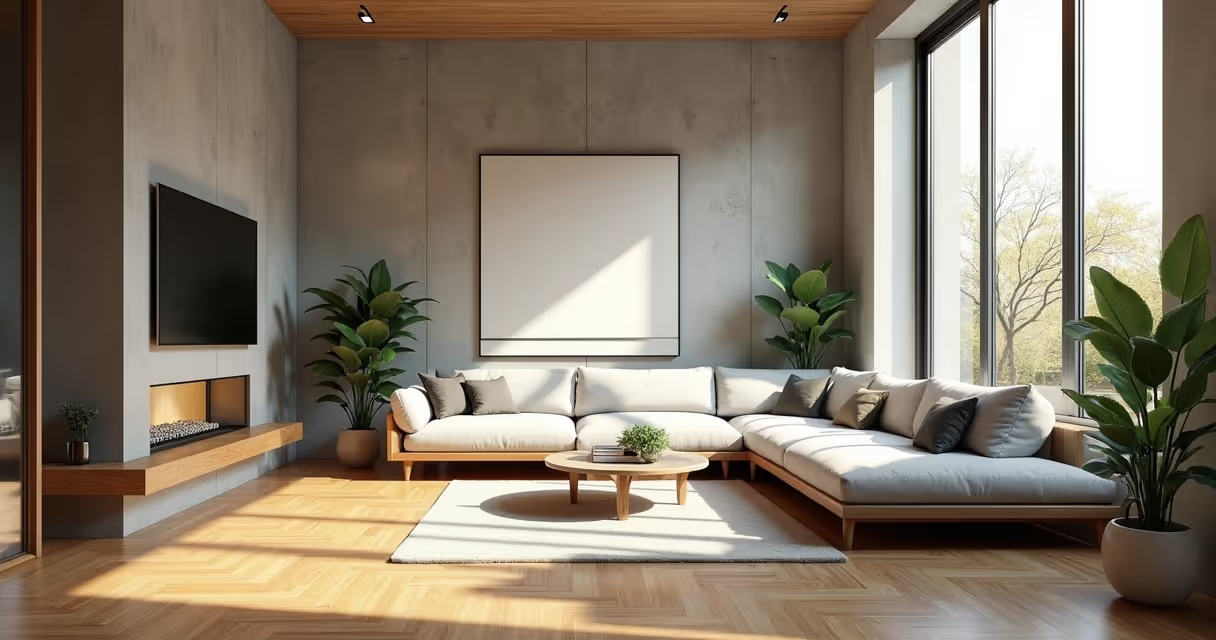Render architecture is no longer synonymous with hours waiting for your PC to breathe that final sigh. If you still hope your computer doesn't crash in the middle of that 3D architectural rendering, get ready to change your mind. Today, while reading this text, professionals are creating realistic images of their projects in minutes, not days. It's artificial intelligence doing what until yesterday seemed impossible. And for those looking for practicality, Redraw offers a new way of seeing and improving architectural visualization, right from the browser and without the fear of a blue screen. If you haven't tried it yet, it's worth knowing.
Rendering for architecture is that magic pass that transforms lines and shapes into vivid scenes, full of texture and light. It's not just visual vanity, no. A good architectural rendering allows the client to see the project before it becomes a work, saves explanation time and increases the perceived value of the service. And among us, nobody misses that tough, emotionless 3D from the old versions of AutoCAD.
Before, rendering 3D architecture took all afternoon and there was plenty of dark circles to explain. Now, AI-based solutions deliver results in minutes. I've seen coffee cool down waiting for a render to roll, but today that sounds almost funny.
The difference between an “ok” image and one that impresses the customer lies in the details: light, shadow, texture, reflection. With AI, you can go from reasonable to amazing, even if you're not a Photoshop artist.
Those who pay bills know: traditional rendering is expensive, both to outsource and to supercharge the office computer. Platforms like Redraw change the bill, as all the weight is in the cloud. In other words, your PC thanks you and so does your financial one.
There's no use miracles. Poorly made model, poor rendering. Take some time to take care of the proportions and organization of the layers.
Highlight are well-adjusted materials, coherent natural light and a good camera. Don't get lost in technical details that only serve to lock the machine.
Final touches on contrast, brightness, and some subtle editing enhance any architectural rendering. Just don't overstate the saturation, please.
Favorite for those who like absolute control down to the smallest details, perfect for more demanding projects and experienced professionals.
Ideal for those looking for quick results and vibrant outdoor scenes, without having to spend nights messing with settings.
If the budget is short but the desire is great, Twinmotion impresses with its ease of use and integration with SketchUp.
Redraw combines artificial intelligence and convenience in the cloud. The big difference? All you need is the browser, and the rest it solves for you, including the natural integration with SketchUp and Revit.

The AI interprets the model and adjusts materials, lighting, and scenery without requiring hours of manual configuration. It sounds like magic, but it's just well-applied technology.
Those who are already stressing out about unstable plugins will appreciate it. Platforms like Redraw work with the main modeling software, without messing around and without drama.
Render in record time. Try to see to believe.
Clients report that that project that took one morning is now ready in a few minutes.
The values vary too much. Outsourced rendering, for example, ranges from R$180 to R$800 per finished image, depending on complexity.
At the end of the month, the cost of maintaining self-employment with AI drops dramatically, especially in offices with medium or high volume of projects.
The equation is simple: more projects delivered in less time. Cloud platforms, such as Redraw, show a quick payback, often in less than a month.
Organize groups, keep the geometry clean. Less is more when it comes to process fluidity.
Choose realistic materials and textures of appropriate resolution. There's no use in a 3D rendering of beautiful architecture and a blurry texture.
Play with natural and artificial light. A well-adjusted light saves even the most dull project.
Review angles, improve exposures, and prepare images for presentation to the customer. It doesn't hurt to take a final look before submitting.
Photorealistic interiors, detailed facades, night images. Each one reaches a different type of customer.
Offering immersive experiences increases engagement. The customer buys with their eyes and already imagines living there.
Companies and professionals have been boosting sales with only high-quality renderings. There are people handing over the key before the work even begins.
Rendering in architecture is the process of transforming digital models into realistic images, simulating light, materials, and textures to show how the project will be completed. It helps clients and teams understand details before construction even begins.
Among the highlights of the year are V-Ray for maximum control, Lumion for quick results, Twinmotion when the budget is a challenge, and Redraw to take advantage of artificial intelligence, practicality and fluid integration with SketchUp and Revit.
Consider the type of project, ease of learning, integration with the modeling software you already use, and your monthly budget. If you don't want a headache, Redraw is a practical option to get started.
Paid plugins often offer better results, advanced configuration options, and quality support. If the objective is to impress clients and speed up deadlines, investing ends up being a good choice.
Some basic versions of software such as Twinmotion can be obtained free of charge from the official developer websites. Always download from trusted sources to avoid security issues.
It's never been so quick, easy and affordable to transform your project into compelling images. Architectural rendering with AI is already a reality, and it goes far beyond what we imagined a few years ago. Redraw is there for those who want to accelerate the process and impress without technical pain. Oh, do you want to see all of this working in practice? Get to know Redraw and test it in your own routine. It's just not worth saying later that no one told you.